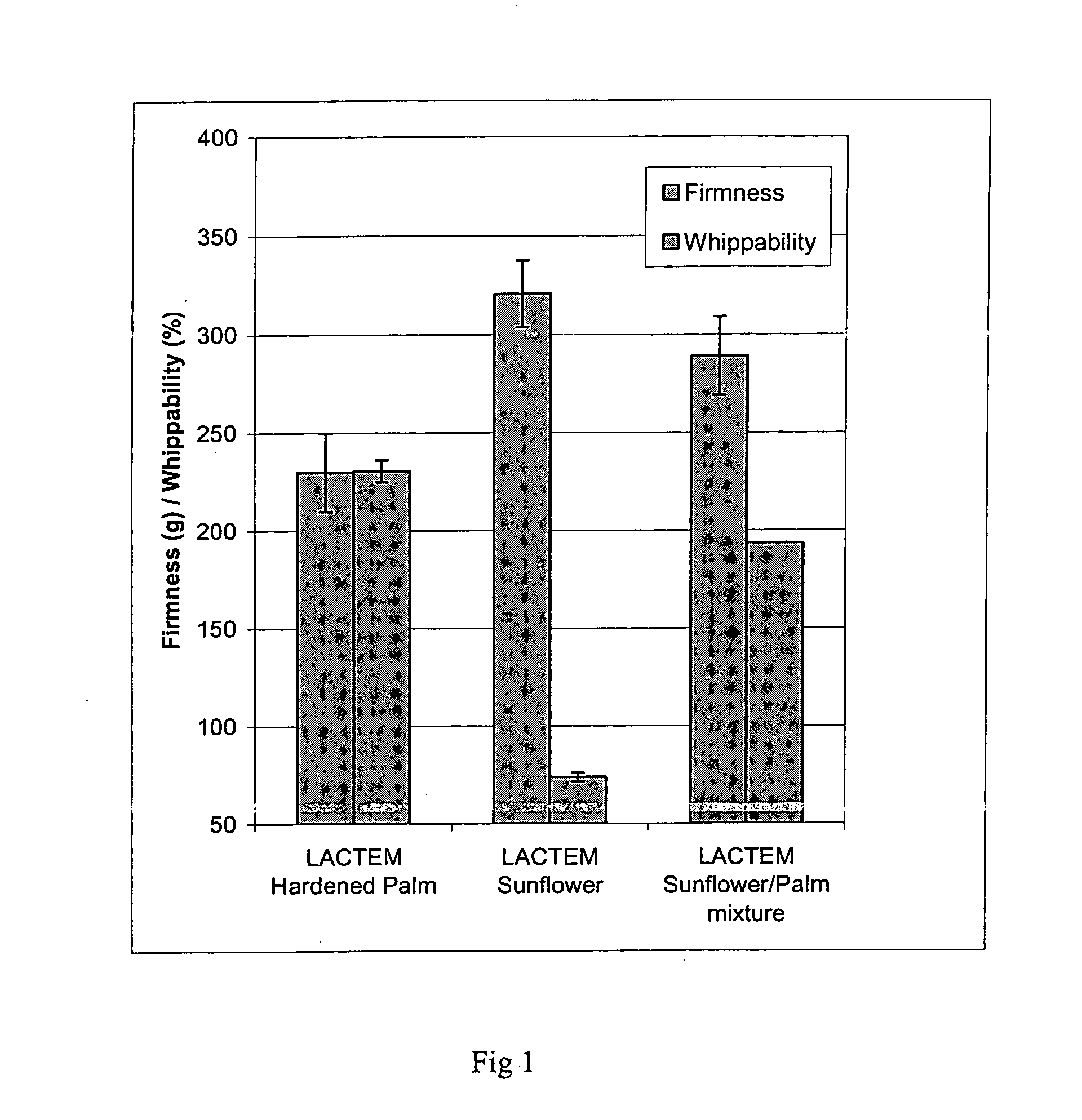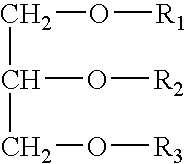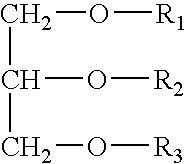Composition comprising lactic acid esters of mono-and diglycerides of fatty acids, an emulsifier containing the same and its use
a technology of lactic acid esters and fatty acids, which is applied in the direction of biocide, plant growth regulators, baking, etc., can solve the problems of poor performance of lactem containing unsaturated fatty acids, and achieve the effect of improving firmness, volume and/or textur
- Summary
- Abstract
- Description
- Claims
- Application Information
AI Technical Summary
Benefits of technology
Problems solved by technology
Method used
Image
Examples
example 1
Production of Unsaturated LACTEM
1100 grams of distilled mono- and diglyceride based on sunflower oil (IV of the distilled mono- and diglyceride=111) and having a monoglyceride concentration of 95% by weight, the rest being a mixture of diglyceride and minor components, was reacted with 300 grams of a 88% by weight lactic acid in water in a 2 L three necked reaction flask with mechanical agitation. The reaction was carried out at up to 210° C. and a pressure of 5 kPa for 3 hours. The resulting reaction mixture was washed with two times 511 grams of water at 90° C. To remove traces of bitter components the washed product was deodorized with live steam at 160° C. and a pressure of 10 Pa for 30 min.
The resulting unsaturated LACTEM was saponified and was found to contain 89% unsaturated fatty acids and 11% saturated fatty acids based on the weight of fatty acids. It was also found to contain 15% lactic acid based on the total weight of the LACTEM after saponification.
example 2
The Firmness of Mousses
Mousses were made according to a standard recipe. Cream, 38% 19.57% Skim milk 63.72% Sucrose 14.5% Gelatine 3250 1.6% Emulsifier 0.6% Nisin 0.01%
Process 1. Mix liquid ingredients 2. Mix dry ingredients 3. Mix dry and liquid ingredients with constant agitation at 70° C. MINI UHT heating 4. Homogenisation at 75° C. / 150 bar 5. Pasteurisation at 78° C. / 2 min 6. Cooling to 10° C. 7. Ageing at 5° C. for 1 hour 8. Mixing on Mondo mixer: Parameters: 9. Filling, 8 beakers (155 mm height)
Furthermore, some mousse mixes were—instead of mixing to constant overrun in the Mondo mixer in pilot scale—mixed manually on a Hobart mixer in the laboratory. The mousse mixes were aged for 1 hour at 5° C. and then whipping was performed at speed 3 and maximum overrun was measured; this was called whippability. The experiments were performed in duplicate.
The tested LACTEM were a standard saturated LACTEM based on hardened palm oil, an unsaturated LACTEM based on ...
example 3
Low Fat Mousse
Low fat mousses are made according to the recipe below
Low fat yoghurt mousse formulation:
22.55% Skimmed milk 4.00% Skimmed milk powder 60.00% Yogurt natural 11.00% Sucrose 1.85% Stabiliser blend (gelatine / starch) 0.60% Unsaturated LACTEM + Flavours + Colours 100.00% Total
Processing procedure:
The mousse is based on a cream mix and yoghurt.
Cream mix:
1. Heat all liquid ingredients to 40° C. 2. Add dry ingredients 4. Homogenise at 200 bar at 65° C. 3. Pasteurise at 95° C. for minutes 5. Cool to 10° C. 6. Add 60% yogurt to 40% mix 7. Age for minimum 30 minutes 8. Whip in aerator to 80% overrun 9. Fill
The firmness of the low fat mousse is almost as good as that of the high fat mousse of example 2.
PUM
| Property | Measurement | Unit |
|---|---|---|
| Fraction | aaaaa | aaaaa |
| Fraction | aaaaa | aaaaa |
| Fraction | aaaaa | aaaaa |
Abstract
Description
Claims
Application Information
 Login to View More
Login to View More - R&D
- Intellectual Property
- Life Sciences
- Materials
- Tech Scout
- Unparalleled Data Quality
- Higher Quality Content
- 60% Fewer Hallucinations
Browse by: Latest US Patents, China's latest patents, Technical Efficacy Thesaurus, Application Domain, Technology Topic, Popular Technical Reports.
© 2025 PatSnap. All rights reserved.Legal|Privacy policy|Modern Slavery Act Transparency Statement|Sitemap|About US| Contact US: help@patsnap.com



